Are you curious about the answer to ‘Is Montana Part of the Great Plains’?
Today, we turn our focus turns to the majestic state of Montana and its place within the fascinating geographic region of the Great Plains.
As we wander through Montana’s vast expanse of grasslands and colorful land formations, we’ll discover its captivating land cover mapping accuracy and diverse land cover types.
From its stream valley to its steep-sided, shallow valley, Montana boasts a tapestry of landscape features that will leave you in awe.
But, let’s address the burning question on everyone’s mind: Is Montana truly part of the Great Plains?
Join me as we unravel the intriguing puzzle of Montana’s borders, exploring the Canadian border, and the vast eastern region it stretches into. Along the way, we’ll uncover the unique characteristics that set Montana apart and shape its distinct identity within the broader landscapes of the Great Plains.
So, whether you’re an adventure seeker, a nature lover, or simply intrigued by the mysteries of the continent, prepare for an unforgettable exploration of Montana’s connection to the Great Plains.
- Related article: Discover Montana
Together, we’ll unravel the tapestry of this magnificent region, celebrating its beauty and gaining a deeper appreciation for its significance. Buckle up, my fellow explorers!
Montana Geographical Overview
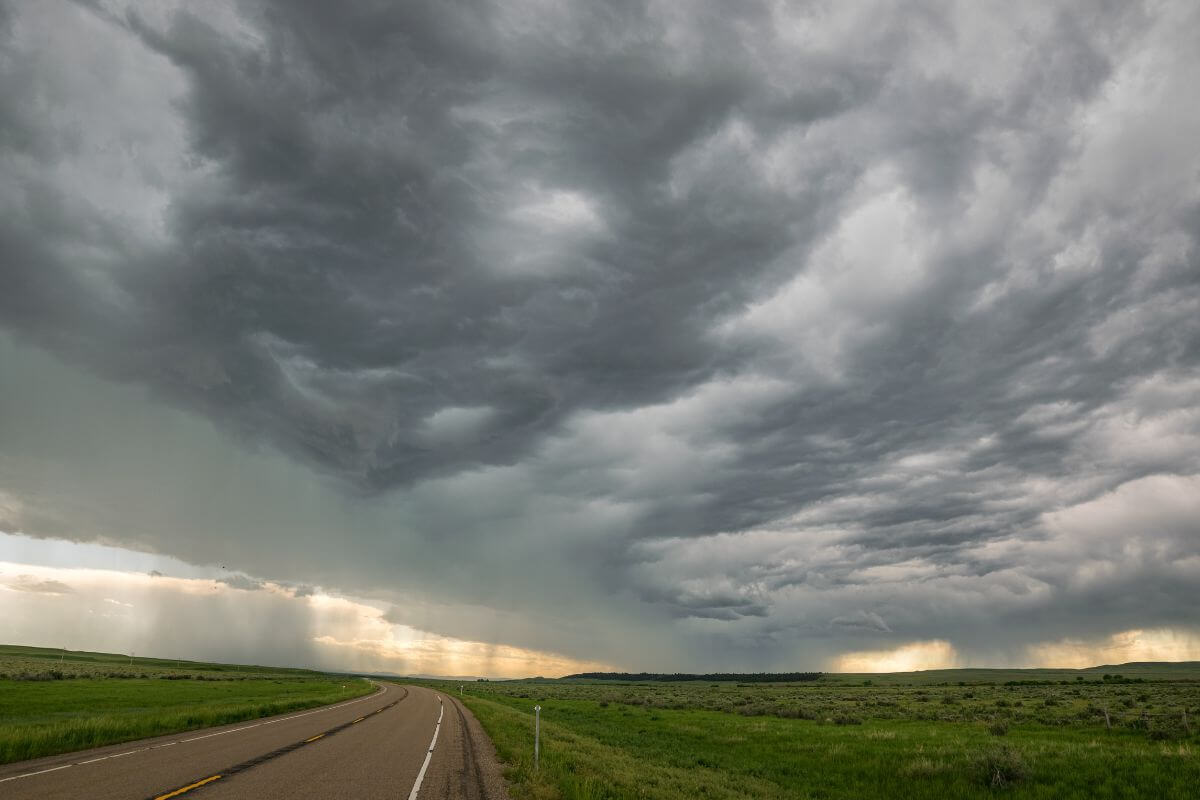
Montana, a captivating state nestled in the heart of the United States, boasts a diverse and awe-inspiring landscape that is sure to leave you spellbound.
With a total area of 147,040 square miles, making it the 4th largest state in the country, Montana offers a vast expanse to explore and discover.
In the northern region, Montana shares its borders with Manitoba, Saskatchewan, and Alberta, which are Canadian provinces. Moving towards the east, North and South Dakota lie adjacent to its territory.
On the southern side, Montana’s neighboring state is Wyoming, and in the southwestern direction, it is bordered by Idaho.
- Learn more about the Surrounding States of Montana
Montana is divided into various regions that offer diverse landscapes and features. The western portion, encompassing 40 %of the state, boasts the majestic Rocky Mountain region.
Here, nature enthusiasts can explore the wonders of Glacier National Park, home to ancient glaciers that have stood the test of time for thousands of years.
Among these breathtaking heights lies Granite Peak, the crown jewel of Montana, standing tall as the highest point in the state.
On the other hand, the eastern 60% of Montana unfolds into the vast expanse of the Great Plains region. This land is adorned with rolling hills, tranquil river valleys, and fields of waving grain.
Great Plains Definition
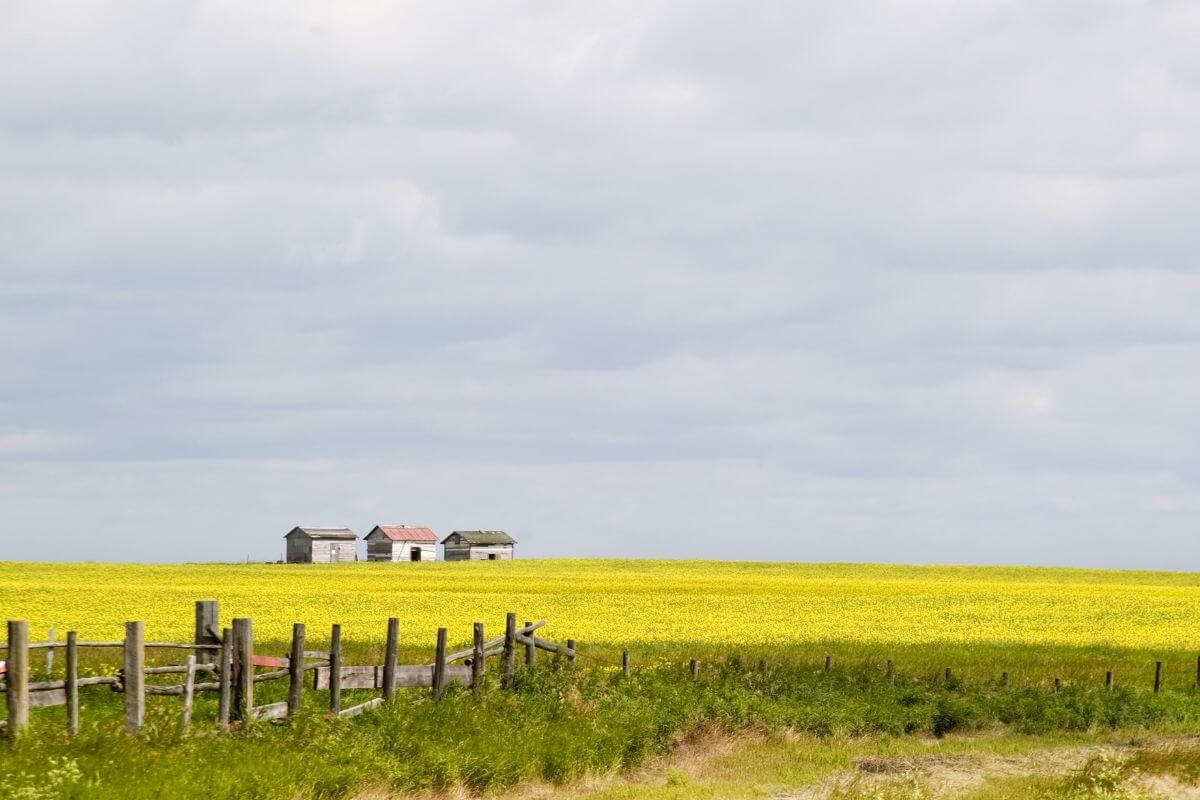
Great Plains is a grassland region that stretches over a vast area, from the Rocky Mountains to the Missouri River and from the Rio Grande to the coniferous forests of Canada.
Stretching over 1,800 miles from the Rocky Mountains to the Missouri River, and covering more than 500 miles from east to west.
Once known as the “Great American Desert,” the Great Plains region has transformed into the “heartland” of America, often called the “breadbasket of the world.” And it’s no wonder why.
Here are 6 valuable resources of the Great Plains:
- Cattle – The vast grasslands of the Great Plains have long been home to thriving cattle ranches, making it a prominent source of beef production for generations.
- Corn – Embracing the wide horizons, the Great Plains has become a leading corn producer, fueling agricultural industries and sustaining communities.
- Wheat – As the “breadbasket of the world,” the Great Plains yields abundant wheat crops, contributing significantly to global food supplies.
- Oil – Beneath its surface lies vast oil reserves, driving economic growth and supporting the energy needs of the nation.
- Gas – The Great Plains also holds substantial natural gas reserves, playing a crucial role in meeting energy demands.
- Coal – With extensive coal deposits, the region has played a vital part in powering industries and electricity generation.
However, the Great Plains offers more than just its abundant resources. It boasts a fascinating history that stretches back thousands of years.
What makes this captivating area even more intriguing is its significant contributions to jazz, literature, and political reform. It’s a place where creativity and change have flourished.
From ancient Paleo-Indian’s hunting down mammoths and bison, to more recent settlers from all over the globe, this land has seen it all.
The Great Plains region has witnessed these significant historical events:
- The Dust Bowl – Witnessed one of the most devastating ecological disasters, a severe drought, in American history.
- Massacre at Wounded Knee – Marked a tragic event in Native American history and the closing chapter of the Indian Wars.
- The North-West Rebellion – A pivotal conflict between indigenous people and the Canadian Government.
- Tulsa Race Riot – One of the worst instances of racial violence in U.S. history, leading to the destruction of the prosperous Greenwood District.
- The Lincoln County War – A violent conflict between rival cattle barons in 19th-century New Mexico Territory.
- Roswell Alien Landing Incident – A mysterious event that fueled speculation and conspiracy theories about extraterrestrial life.
From the native grasslands to its eastern borders, every inch of this region tells a story.
Great Plains Land and Vegetation

The Great Plains, a semi-arid grassland, presents a breathtaking spectacle where the earth and sky blend in a graceful union.
The Great Plains boasts a vast expanse with diverse elevations, where heights range from 1,500 feet in the east to awe-inspiring peaks of 5,000-6,000 feet in the west.
A remarkable landscape of contradictions unfolds before us, as arid stretches converge with bountiful agricultural territories.
The region’s soil is a testament to the intricate dance between climate, biology, and time. Formed through the weathering process, these diverse soils are a product of their environment.
You may be surprised to learn that the Great Plains were once covered in forests. Over time, however, these forests transitioned to grasslands, leaving behind soils with well-developed horizons.
Topography also plays a critical role in soil development in the Great Plains. From sand fields to alluvial-colluvial deposits, the land tells a story of its own.
With proper management and conservation practices, these Great Plains soils can be harnessed for productive agriculture.
In the western Great Plains, specifically the shortgrass prairie, short grasses reign supreme. Species like grama, buffalograss, needle grasses, and wheatgrasses create a symphony of color and texture.
Yet, mixed with these grasses are shrubs that add their own unique charm. Sagebrush, sumacs, saltbush, winter fat, and even cholla lend a touch of diversity to this sea of green.
What States Are in the Great Plains?
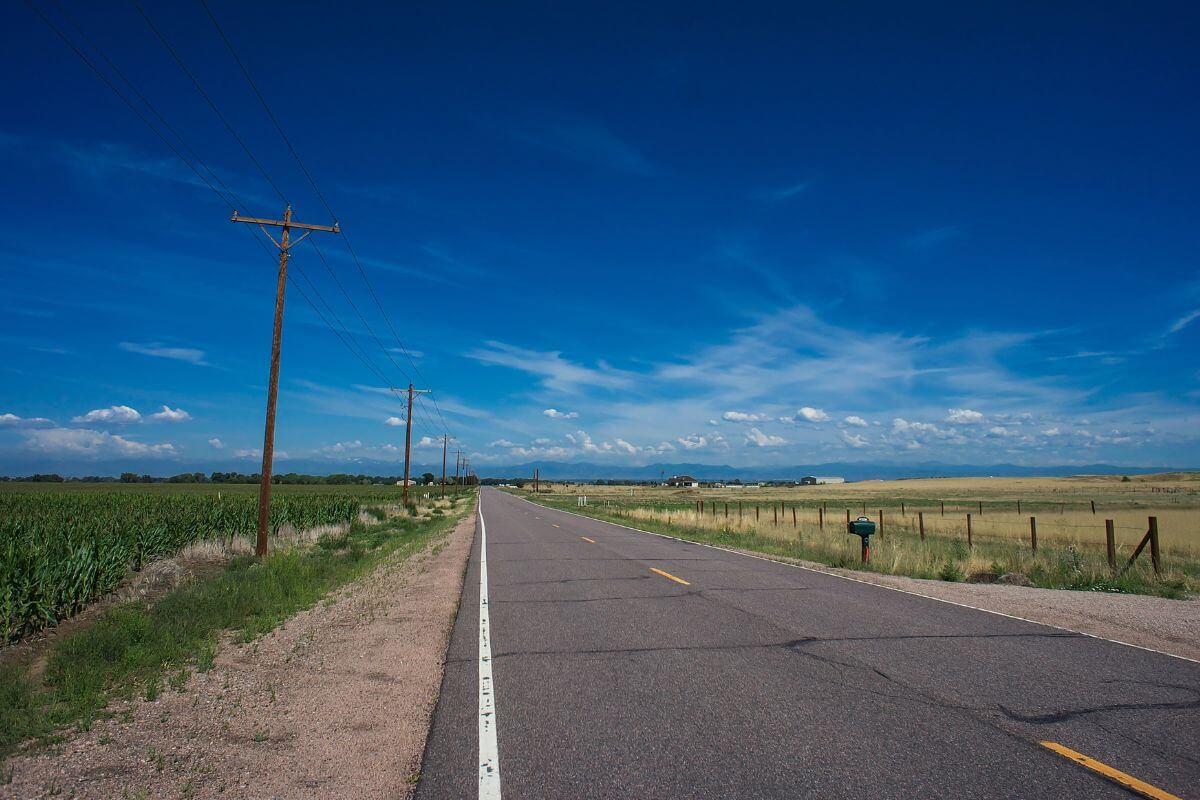
In the US, the Great Plains is comprised of 10 US states, which together contribute to the distinct cultural and environmental fabric of this area.
The US states that are in the Great Plains are Texas, New Mexico, Oklahoma, Kansas, Colorado, Nebraska, Wyoming, South Dakota, North Dakota, and Montana.
While Montana is partly in the Great Plains, only its eastern parts are included in the region and are characterized by vast grasslands, rolling hills, and a semi-arid climate.
Montana’s eastern parts are an extension of the Great Plains that stretches across much of the central and eastern portions of the United States.
Western Montana region is part of the Rocky Mountains and is characterized by rugged mountain ranges, forests, and numerous rivers and lakes.
Together, they create the rich tapestry that forms our cultural heritage and shapes the awe-inspiring landscapes of this oft-overlooked and misunderstood region.
What Canadian Provinces Are in the Great Plains?
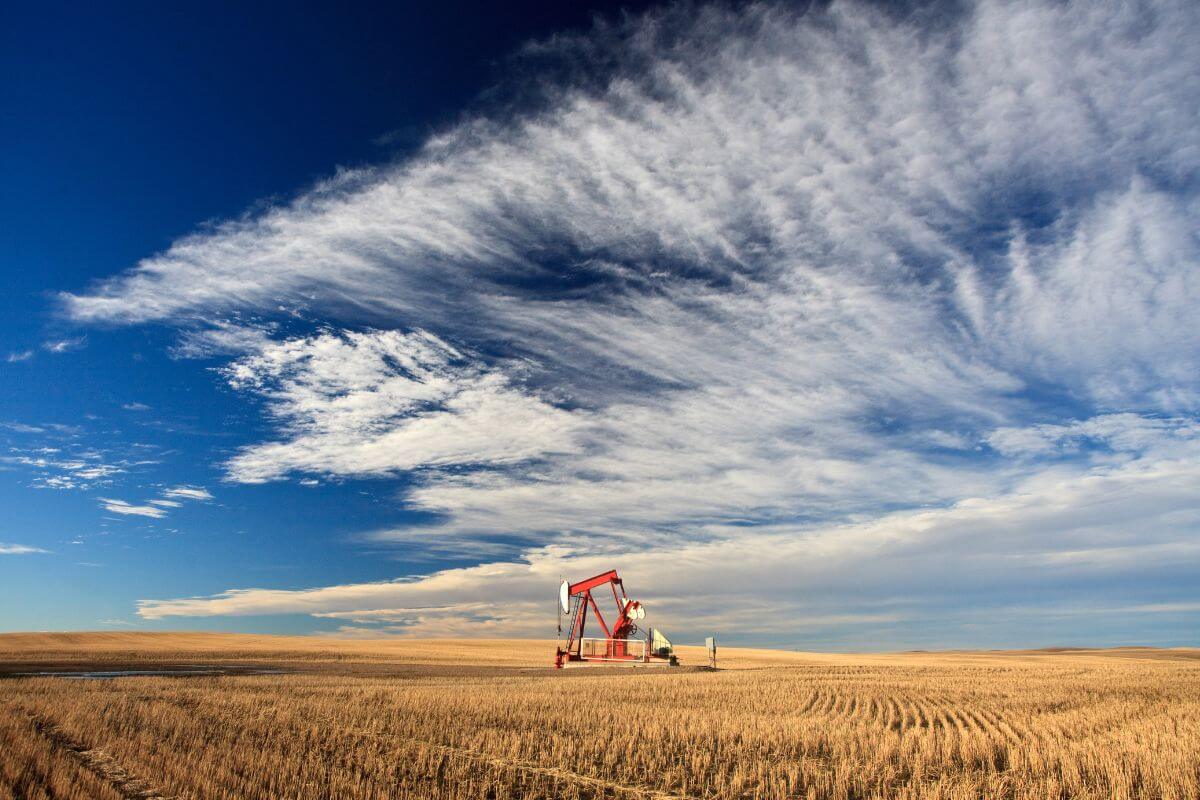
It’s important to acknowledge the Canadian provinces that hold their rightful place within this grand tapestry.
In Canada, the Great Plains can be found spanning across areas of 3 Prairie Provinces, namely Manitoba, Saskatchewan, and Alberta, extending into parts of the Northwest Territories.
Now, the Atlas of Canada may not specifically classify a designated region as the “Great Plains.” Instead, the term “prairie” is more commonly used when referring to the region.
So, as we explore the wonders of this region, let us not forget the Canadian portion.
Alberta, with its rugged Rockies, Saskatchewan’s golden fields, and Manitoba’s abundant rivers and forests, all enhance the beauty of the Great Plains.
Together, these Canadian provinces weave their own tale within the broader landscapes of the Great Plains.
Does Montana Belong to the Great Plains Final Thoughts
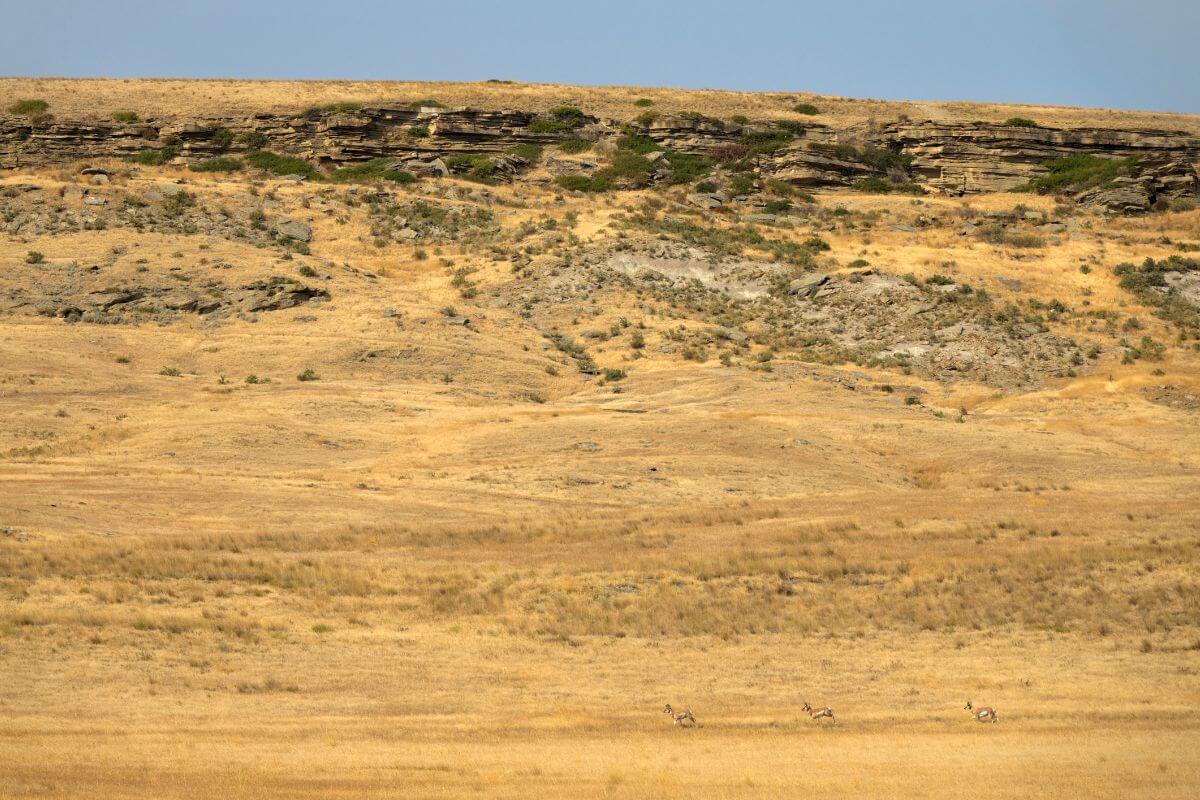
The question of whether Montana belongs to the Great Plains is a nuanced one. Geographically speaking, Montana is a state that straddles both the Rocky Mountain region and the Great Plains.
The state’s western portion is a part of the majestic Rocky Mountains, characterized by rugged mountain ranges, forests, and numerous rivers and lakes.
On the other hand, its eastern regions extend into the Great Plains, characterized by vast grasslands, rolling hills, and a semi-arid climate.
While a significant portion of Montana is considered to be part of the Great Plains, it’s essential to recognize that the state’s identity is shaped by both its mountainous and prairie landscapes.
This diversity is what contributes to Montana’s captivating allure and the unique experiences it offers to residents and visitors alike.
When discussing Montana in the context of the Great Plains, it is crucial to acknowledge that the Great Plains is a much larger region that spans multiple states in the US and extends into Canada.
Montana’s eastern regions are just one piece of this vast puzzle, and they share common characteristics with the Great Plains in terms of landscape and climate.
As with many geographical designations, the boundaries between regions can be somewhat fluid and open to interpretation.
Some may consider Montana as wholly part of the Great Plains, while others might emphasize its connection to the Rocky Mountains.
In the end, Montana’s identity is shaped by the interplay between these two contrasting landscapes.
It is a state that showcases the rich diversity of America’s geography, blending the rugged majesty of the Rockies with the sweeping beauty of the Great Plains.
Regardless of how it is categorized, Montana’s natural wonders and unique cultural heritage continue to make it a captivating and awe-inspiring destination for all who explore its vast expanse.
Does Montana Belong to the Great Plains FAQs
1. What Is the Great Plains?
The Great Plains refers to a vast expanse of grasslands that stretch over 1,800 miles from the Rocky Mountains to the Missouri River and cover an area of more than 500 miles from east to west.
2. Which States Belong to the Great Plains?
The states within the Great Plains region include Texas, New Mexico, Oklahoma, Kansas, Colorado, Nebraska, Wyoming, South Dakota, North Dakota, and Montana.
3. Which States Do Not Belong to the Great Plains?
The States that do not belong to the Great Plains are:
- New England: Includes Connecticut, Maine, Massachusetts, New Hampshire, Rhode Island, and Vermont
- Middle Atlantic: Includes New Jersey, New York, and Pennsylvania
- East North Central: Includes Illinois, Indiana, Michigan, Ohio, and Wisconsin
- West North Central: Includes Iowa, Minnesota, and Missouri
- South Atlantic: Includes Delaware, District of Columbia, Florida, Georgia, Maryland, North Carolina, South Carolina, Virginia, and West Virginia
- East South Central: Includes Alabama, Kentucky, Mississippi, and Tennessee
- West South Central: Includes Arkansas, and Louisiana
- Mountain: Includes Arizona, Idaho, Nevada, and Utah
- Pacific: Includes Alaska, California, Hawaii, Oregon, and Washington
If you want to learn more about Montana, keep your mind engaged with these articles:

